School Programs
Seymour Art Gallery offers School Tours and School Workshops as a community resource to broaden the range of learning opportunities in the visual arts.
To learn about the educational programming we can offer, please contact us as info(at)seymourartgallery.com
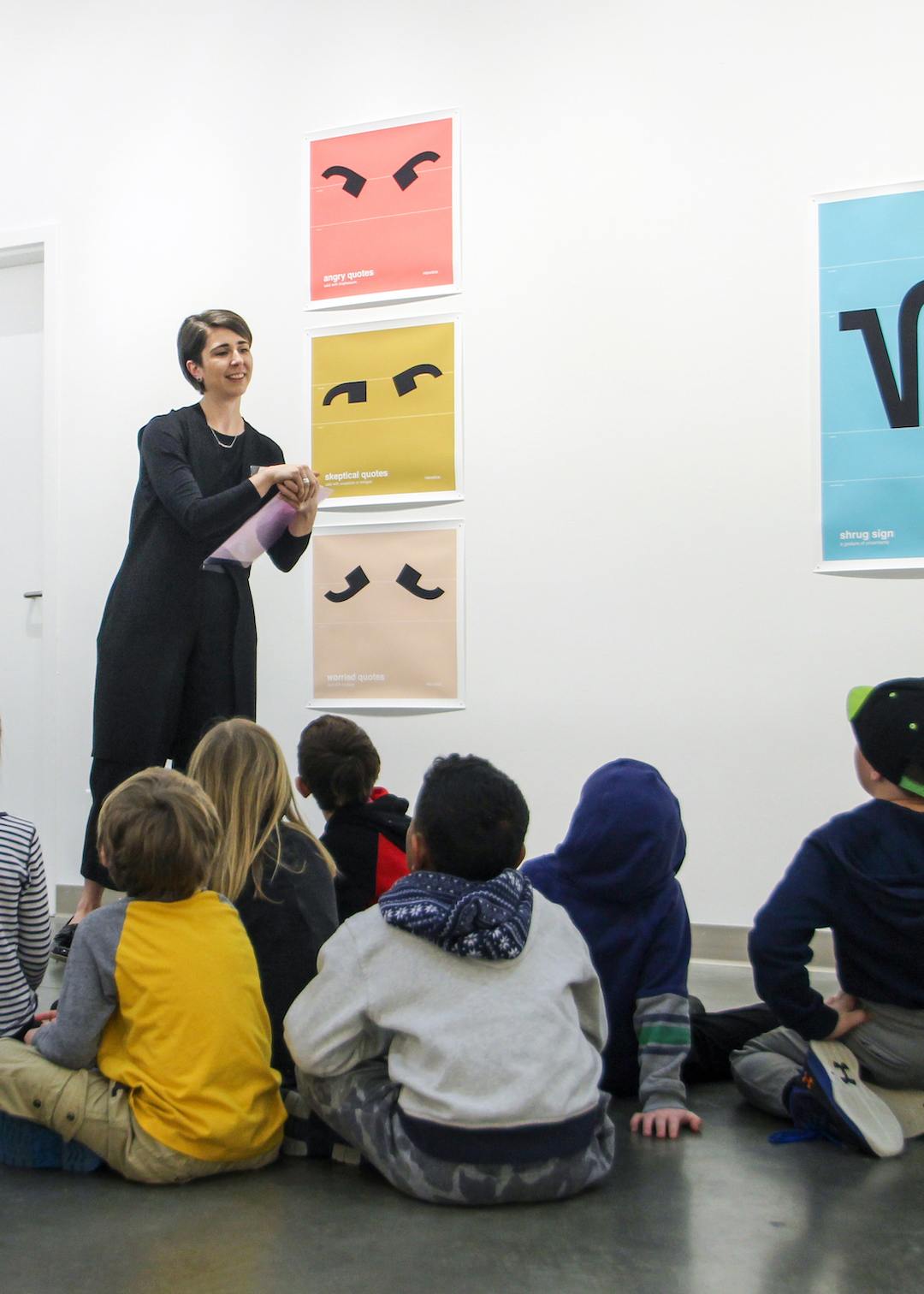
School Tours
School Tours are half-hour tours of our exhibitions, led by a staff member or docent, for school classes from Kindergarten to Grade 12. Sessions must be booked in advance, but we will do our best to accommodate teachers’ schedules if classes are unable to attend the regularly scheduled tours. Our School Tours (without a workshop) are presented free of charge but donations to our non-profit society are always appreciated.
On Demand
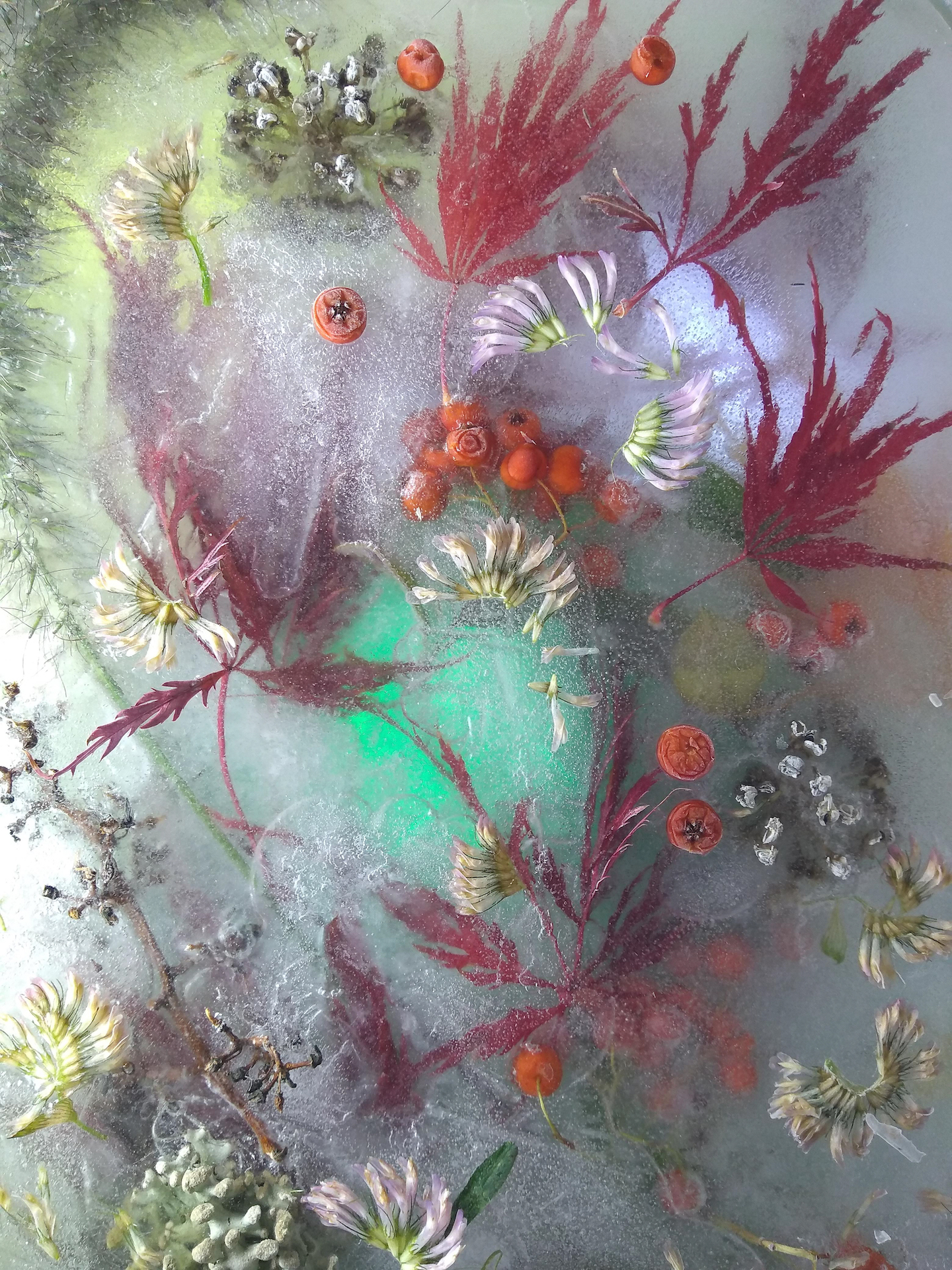
School Program Workshop
Botanical Ice Tiles with Photographer Cherry Archer
Suitable for grades 2 – 12
$2 per student if materials are not provided
This unique online workshop will bring the gallery to your classrooms! In this cross-curriculum project linking the properties of light and water as well as visual art strategies, students will learn from artist Cherry Archer and create their own botanical ice tile that celebrates the natural world, while encouraging curiosity and experimentation.
About the instructor
Cherry Archer is a Vancouver-based photographer and a Canadian of Trinidadian heritage. Her images often focus on flora, its beauty, strength, and fragility.
The nascent idea for the Botanical Ice Tile series evolved while photographing frozen ponds during the 2017 Vancouver winter cold snap. Inspired by the quality of light and distortions created by air trapped in the ice, Cherry decided that it was an idea worth examining. The Botanical Ice Tile series explores tensions between randomness and control, transience versus preservation, and reality versus abstraction.
Cherry Archer was an exhibiting artist during the group show Roots Revealed: Contemporary Art of the Caribbean Diaspora which showed at the Seymour Art Gallery this past summer.
About the virtual workshop
Students will create a frozen ice tile, incorporating found plant material. They will layer the ice and photograph their tile using flashlight as a light source and recycled material to tint the light. They will learn about how to respectfully collect plant material, how to compose their foraged materials using elements of design, how to work with unconventional art materials like ice, recycled plastic, and light, and be encouraged to collaborate and experiment.
The students will begin by spending time outdoors looking for plant materials that have interesting shapes, colours, and textures, and learn how selecting materials with an intentional colour scheme can strengthen their work. They will develop skills in using simple visual non-traditional art tools and materials through learning to manipulate ice to create photographs with a sense of depth and atmosphere. This project will help students begin to understand that art making materials can come from anywhere and be transformed in unexpected ways.
The workshop portion of this special program will be a recorded instructional video and demonstration with Cherry Archer that teachers will receive a link to access.
This program includes:
- An online 3D model of the exhibition Roots Revealed, that students can explore
- A video interview with Archer where she speaks about her photographs in Roots Revealed and her practice a whole
- A 20-minute video tutorial where Archer leads students through a hands-on workshop to create and photograph their own botanical ice tiles
- Written instructions for students and teachers as well as photos of the tiles Archer used in her tutorial
- Materials required for students to create this project in the classroom including clear rectangular plastic bins, colourful recycled pieces of plastic like cellophane, colourful tissue paper, and thin fabrics to use as gels to tint light.
* Students will need to responsibly forage for their own found plant material and bring those items to class.
Please note:
- Teachers will need water, access to a freezer at school, and a digital camera, phone, or tablet that students can use to photograph their ice tiles.
- The cost of this workshop is $2 per student
- Materials required for this workshop include: a large, clear rectangular plastic container each, cups for pouring water, recycled colourful pieces of plastic, tissue paper or fabric, and flashlights.
Please email us at info(at)seymourartgallery.com to register.
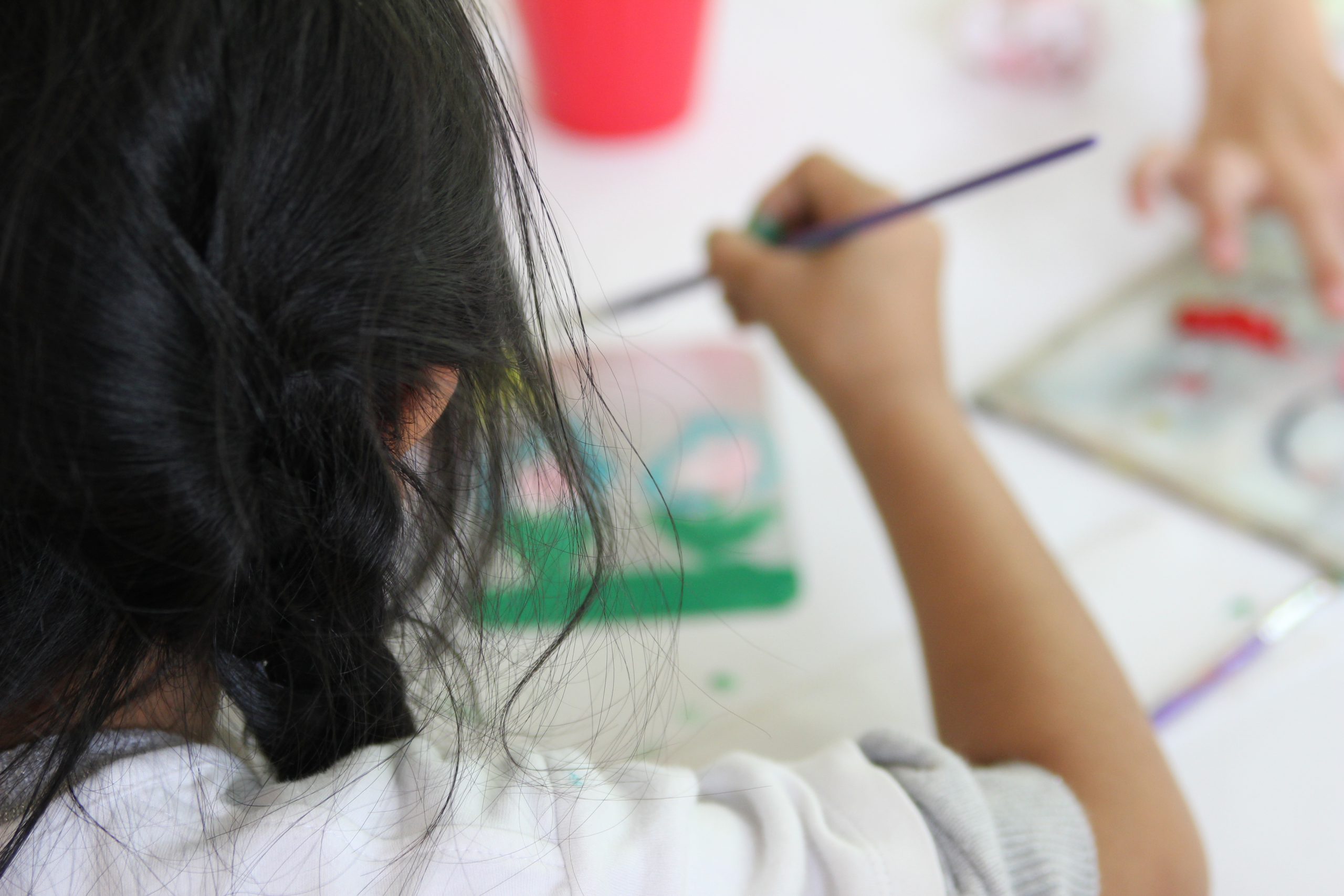
School Workshops
School Workshop sessions are presented in conjunction with the exhibition on display at the gallery. Students receive a short lecture from a visual artist regarding the exhibition followed by a one-hour hands-on workshop. We offer programs designed for both elementary schools and secondary school classes. This is an excellent opportunity for students to meet professional working artists and benefit from their experience.
We look forward to working with teachers to create an inspiring educational art experience for students. Here we are, right in your neighbourhood, opening our doors to children and youth to enhance their knowledge, help them appreciate art and let them find inspiration to better express themselves. Each session is enhanced by the gallery setting and exposure to original art.
The cost is $125 per session and we can accommodate up to 25 students. Refunds are available until 7 days before the session date.
Past School Workshops
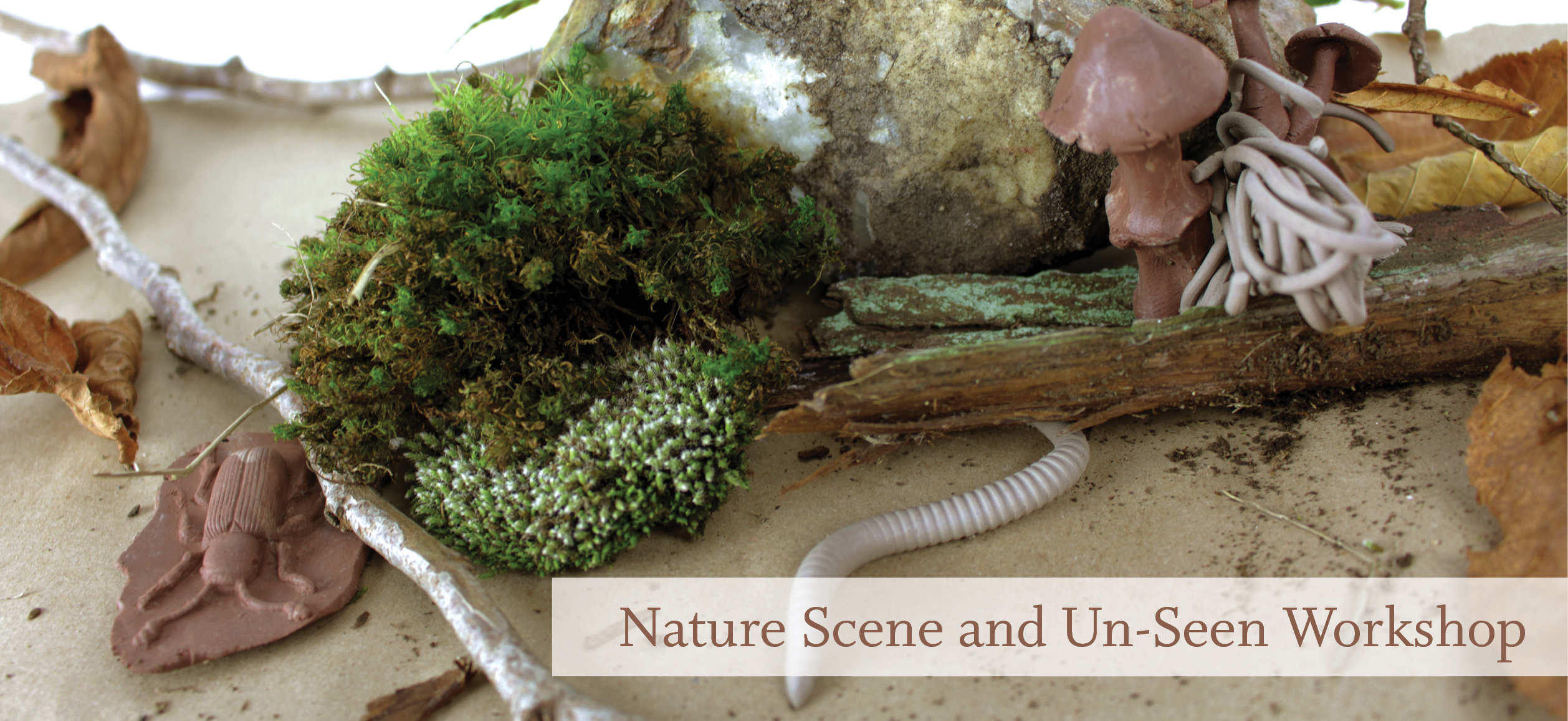
About 'Nature Scene and Un-seen Workshop'
Nature Scene and Un-Seen Workshop
with Exhibiting Artist Amelia Butcher inspired by her exhibition Sister Worm.
April 2020
Our Nature Scene and Un-Seen Workshop with exhibiting artist Amelia Butcher is inspired by her exhibition Sister Worm. This school program will start with a gallery tour and culminate in a hands-on art making workshop.
Amelia Butcher’s captivating solo exhibition uses curiosity, empathy, and labor to explore both the real and imagined lives of worms. Immersing the viewer in a subterranean environment informed by rigorous research, literature, and humor, Sister Worm asks viewers to consider a lateral relationship to natural systems, both seen and unseen. Butcher writes: “I don’t mean to see worms and soil as metaphors for human experiences; I really am interested in the worms themselves. Their experiences are not vessels for mine. Our lives can rhyme with each other.”
Students will first tour the exhibition and discuss the importance of non-human creatures and the natural world, and consider how their own lives are impacted by these unseen creatures and systems. Butcher, borrowing from a history of still-life painting, scientific curiosity, natural observation, and a childhood obsession of flipping over logs to reveal what’s underneath, will lead students in creating a temporary, organic, collaborative sculpture.
Found rocks and logs will be arranged into a still-life that appears as if lifted from a forest floor. Students will be invited to contribute their own miniature clay narratives into the tableau. They will use their powers of observation to draw inspiration from images of fungi and slime-molds and practice sculpting from reference as well as from imagination. Students will learn basic clay modelling techniques and how to use tools like extruders and press-molds. Once the sculpture is finished and documented, all materials will be recycled or returned to the outdoors, mimicking natural cycles of creation and decay.
Amelia Butcher is a visual artist based in British Columbia with a sculptural and drawing practice centered in clay. She graduated from Emily Carr University in 2013 and is a founding member of the Dusty Babes Collective. Since 2015 she and the other Dusty Babes have been sharing the studio built by the late great Don Hutchinson, located in Surrey on the traditional territories of the Semiahmoo, Katzie, Stó:lō, W̱SÁNEĆ and Kwantlen First Nations.
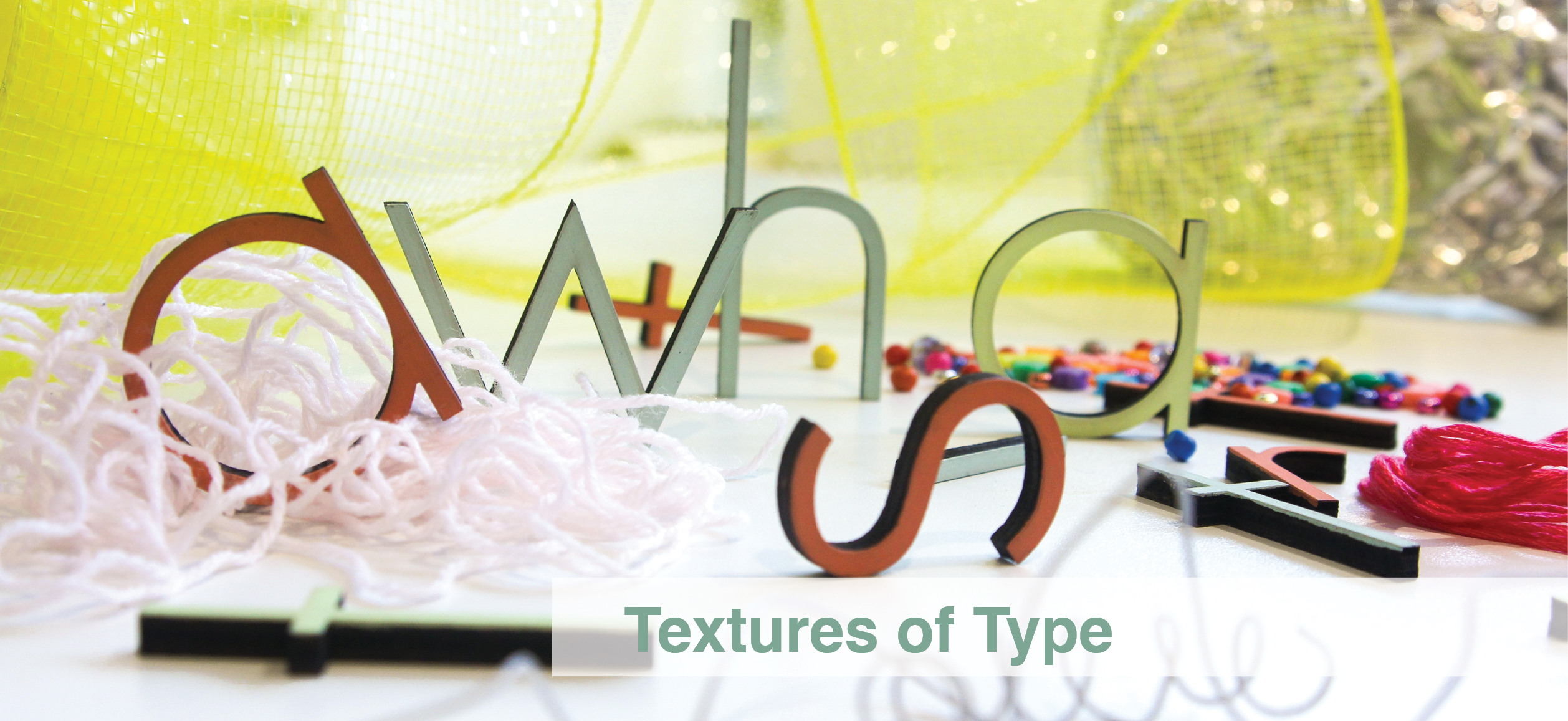
About 'Textures in Type'
Textures in Type: Typography and Up-Cycling workshop
with artist and graphic designer Greame Zirk inspired by Mia Cinelli’s exhibition This Being Said.
February 2020
Textures of Type with artist and graphic designer Graeme Zirk is inspired by Mia Cinelli’s exhibition This Being Said. This school program will start with a gallery tour and culminate in a hands-on art making workshop.
Mia Cinelli exhibits a series of new punctuation marks, letterforms, and symbols informed by facial expressions, gestures, and nonverbal communication in her most recent exhibition. Using design as a medium for inquiry, Cinelli’s typographic series of large digital and small letterpress prints invite discussion about how our current language looks, works, and how our communication might evolve. Featuring both proposed glyphs and examples of their context of use, these works engage in a kind of ‘world building’ to illustrate a possible future. Specializing in the design of images and experiences, her installation creates a colourful, energetic environment wherein the rules of punctuation are playfully expanded upon.
Students will first tour the exhibition and learn about how and why Cinelli’s new punctuation marks encourage meaningful connection. Students will discuss their daily forms of communication and consider how typography impacts their lives.
Zirk will then teach students about typography by showing them examples of naturally occurring letterforms in architecture, nature, and design. Prior to the workshop, classes will have been asked to assign one letter from the alphabet to each student. With their unique letter, students will then brainstorm sounds, colours, flavours, smells, textures, adjectives, and actions they associate with their letter and its shape.
Choosing one of their associated words and then selecting from a wide range of up-cycled materials like fabric, carpet, paper, tinfoil, etc, students will apply their materials to an uppercase laser-cut version of their letter. Ultimately, students will create a three dimensional, highly textured version of their letter and as a class, create a full alphabet. This fun workshop will encourage experimentation, creativity, and offer students a new perspective on typography and communication.
Graeme Zirk is a Vancouver based Illustrator and Artist with a background in Graphic Design and nothing to lose. He grew up in the Prairies where he drew comics, performed stand-up comedy and worked human service jobs before being wooed by a career in design in the (relatively) big city. He is interested in making work that looks both flawed and refined. Feels wry and heartfelt and communicates complex ideas simply. He is inspired by Japanese confectionary packaging, Mad magazine, early interface design, skateboarding, Polish posters, documentaries, modernism, Science Fiction, Fantasy and The Blue Album.
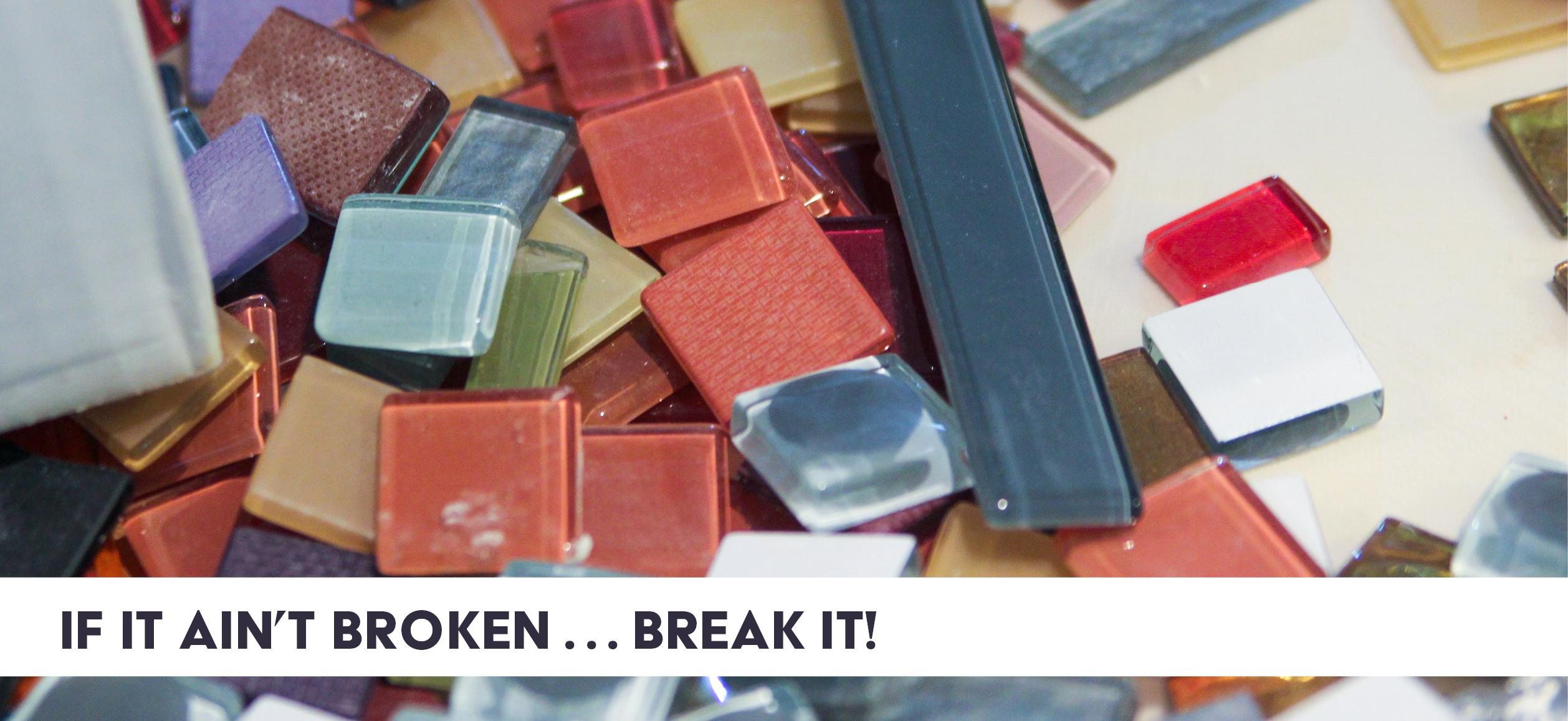
About 'If It Ain't Broken... Break It! Mosaic Workshop'
If It Ain’t Broken… Break It! Mosaic Workshop
with artist and graphic designer Greame Zirk inspired by Sally Michener’s exhibition Sit . Stay . Speak
October 2019
Our mosaic workshop with artist Graeme Zirk is inspired by the exhibition Sit . Stay . Speak: New Work by Sally Michener. This school program will start with a gallery tour and culminate in a hands-on art making workshop.
The human figure has been a central subject throughout ceramicist Sally Michener’s career. Some of her collections focus on the entire figure or on particular body parts while others, in the absence of the figure, use columns and scale to make the viewer more aware of how their own bodies occupy space. Her most recent series, ten hand-built ceramic sculptures clad in mosaic of ceramic and glass, playfully explores a new subject: dogs.
In Sit . Stay . Speak, a large u-shaped table installation occupies the gallery, positioning the eye-line of the dogs on the same level as the viewers’. Each sculpture has a unique colour scheme made of a complex combination of glass tiles, broken china, and found ceramics. Like much of Michener’s previous work, this series playfully subverts our expectations with a refreshing sense of humour.
Exploring her large-scale installation, students will tour the exhibition and learn about Michener’s creative process and discuss her choice of subject, materials, and use of color. During the workshop, students will choose an object that represents something important to them. Zirk will then show students how to draw their object in a pixilated style so that it can be represented as a mosaic. He will push participants to simplify their objects, trim unnecessary details, focus on key elements, and put things back together in a way that’s more interesting than how they were found. After students have sketched their design, they will then learn how to create their own two-dimensional mosaic using the same recycled tiles Michener uses to create her sculptures. This fun workshop will encourage experimentation, stylization, and creativity!
Graeme Zirk is a Vancouver based Illustrator and Artist with a background in Graphic Design and nothing to lose. He grew up in the Prairies where he drew comics, performed stand-up comedy and worked human service jobs before being wooed by a career in design in the (relatively) big city. He is interested in making work that looks both flawed and refined. Feels wry and heartfelt and communicates complex ideas simply. He is inspired by Japanese confectionary packaging, Mad magazine, early interface design, skateboarding, Polish posters, documentaries, modernism, Science Fiction, Fantasy and The Blue Album.
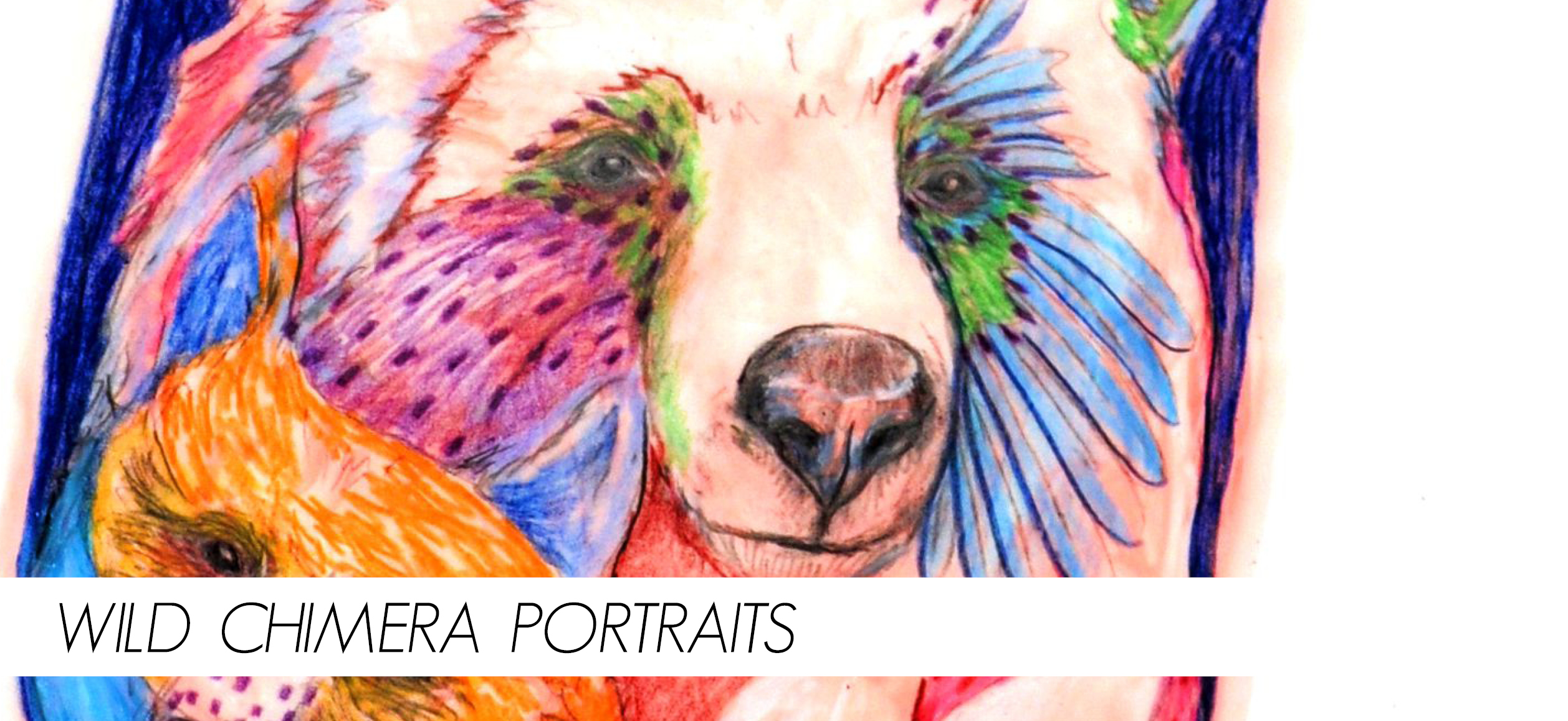
About 'Wild Chimera Portraits Workshop'
Wild Chimera Portraits
with Sarah Ronald, inspired by Start with Art
May 2019
Our Wild Chimera Portraits workshop with exhibiting artist Sarah Ronald is inspired by our upcoming 15th annual Start with Art exhibition. This school program will start with a gallery tour and culminate in a hands-on art-making workshop.
Start with Art is an exciting annual exhibition that aims to educate children and cultivate the love of art and art collecting. Established artists will exhibit artwork, offer advice for young artists, and share childhood memories about art-making.
Students will first tour Start with Art with Sarah Ronald, and focus on how the different artists have used form, pattern, and colour in unique ways. Students will then sketch in the gallery and take inspiration from their favorite work on display. These drawings will later be used as reference in the workshop.
During the workshop, students will use a variety of materials and choose from different West Coast animals to use as inspiration for their chimera portrait. Using reference photos and tracing techniques to create the initial pencil drawing, students will then refer to their studies from the gallery to create an imaginary creature that combines both animal and human features!
Sarah Ronald grew up in Summerland, in the interior of BC, and spent most of her childhood outside, exploring the local mountains, orchards, valleys, swamps, and farms. After graduating with her BFA from Okanagan University, she moved to the West Coast; she currently lives in Port Coquitlam. In her home studio Sarah creates artwork about the natural world, primarily focusing on wild animals, and she uses a wide variety of materials including drawing, painting, resin, and more recently 3D printing.
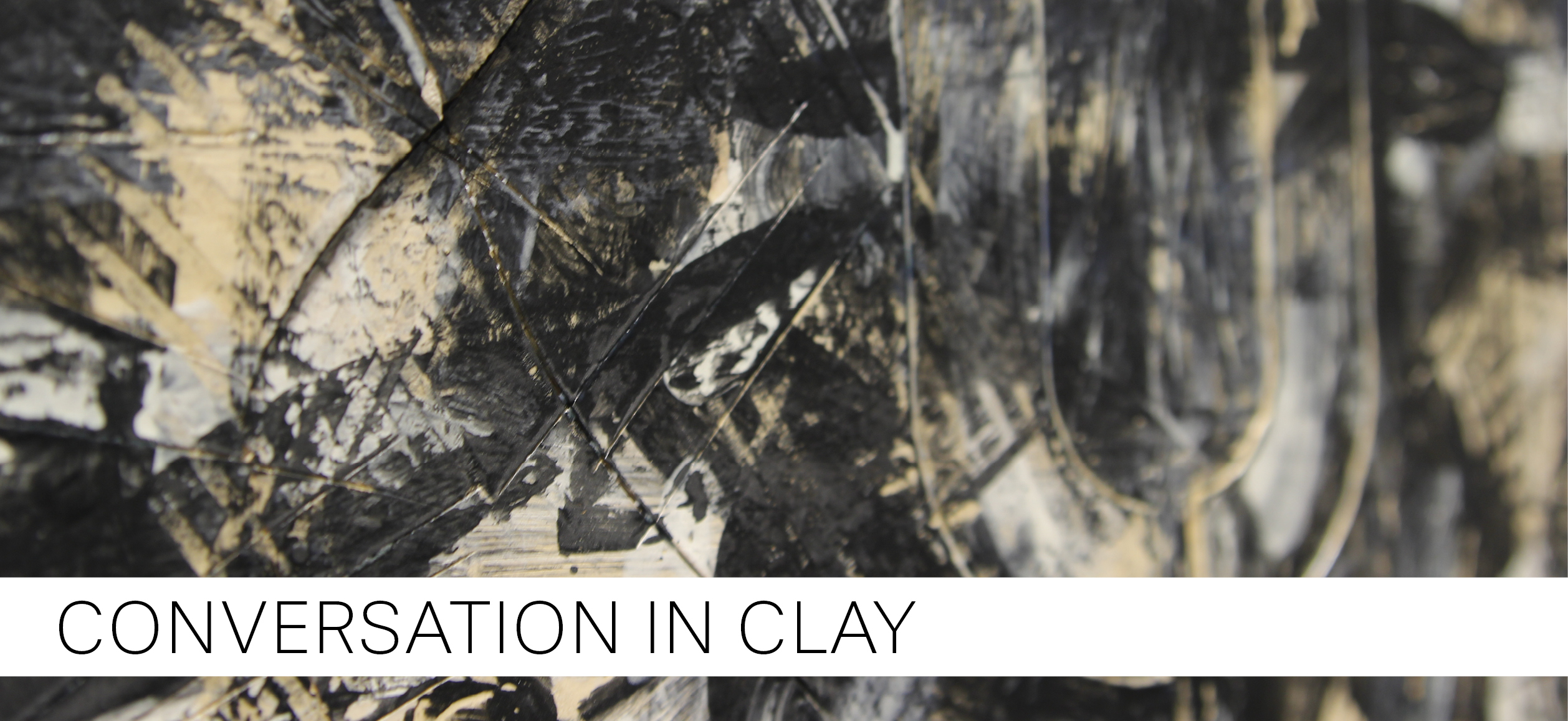
About 'Conversation in Clay Workshop'
Conversations in Clay Workshop
with Kate Whitehead, inspired by Pierre Coupey’s exhibition Manifest | Trace
April 2019
Conversation in Clay a ceramic workshop with artist Kate Whitehead, inspired by Pierre Coupey’s exhibition Manifest | Trace, currently on display at the Seymour Art Gallery. The school programs will start with a gallery tour and will culminate in a hands-on art-making workshop.
In his arresting solo exhibition Manifest | Trace, West Vancouver artist Pierre Coupey presents work in a variety of media that foregrounds the importance of language and the immense impact it has on shaping our world. A quartet of square monochromatic oil paintings, a glowing neon text-based installation, twenty-six ceramic plates each carved, painted, and inscribed with a letter of the alphabet, occupy the gallery. In homage to American writers William Carlos Williams and Gilbert Sorrentino, Coupey gives physical form to two of their seminal works and takes inspiration from their poetry about life and language. Manifest | Trace exemplifies Coupey’s method of working in shorter series that originate from a core set of concepts and emotions. The exhibition, divided into several of these smaller series, makes clear how Coupey explores deliberately restricted aesthetic parameters in each.
Students will first tour Manifest | Trace with artist Kate Whitehead, focusing on Coupey’s large installation of 26 ceramic plates, each one inspired by a letter of the alphabet. Using clay, students will then create their own ceramic plate that incorporates a word of their choosing. This project will encourage students to respond to, and be inspired by, language through visual art.
A North Vancouver resident, Kate Whitehead has a background in film studies and art history. She has been working in ceramics since 2006. Kate’s work is informed by her passion for stories and storytelling. She often takes inspiration from the fairy tales, adventure stories, and comic books that she grew up with.
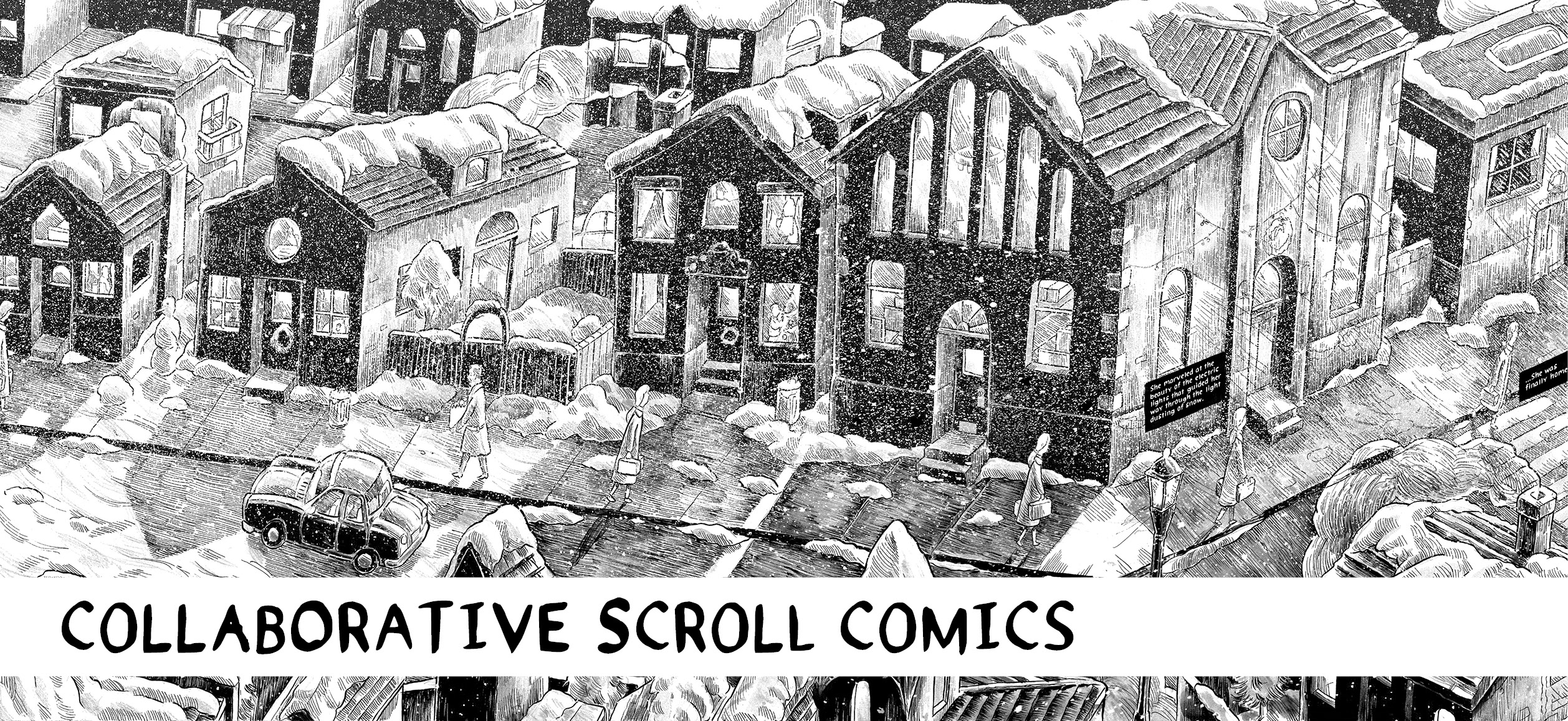
About 'Collaborative Scroll Comic Workshop'
Collaborative Scroll Comics
with artist Sean Karemaker, inspired by his exhibition Candy Bar, Electric Lights
February 2019
The school programs will start with a gallery tour and will culminate in a hands-on art-making workshop.
Students will first tour the scrolls in Candy Bar, Electric Lights with exhibiting artist Sean Karemaker, and learn about how his childhood has influenced the kind of art that he makes today. Karemaker will then demonstrate several drawing techniques before students work in groups to collaborate on a large narrative scroll. This project will encourage students to see art and storytelling as an important means of individual expression, and foster creative collaboration.
Sean Karemaker obtained a diploma in graphic design from Malaspina University-College in 2002 and is an artist and author working in comics, drawing, painting and murals. His graphic novel Feast of Fields was recently included in CBC Books’s top 16 Canadian comics of 2018.
